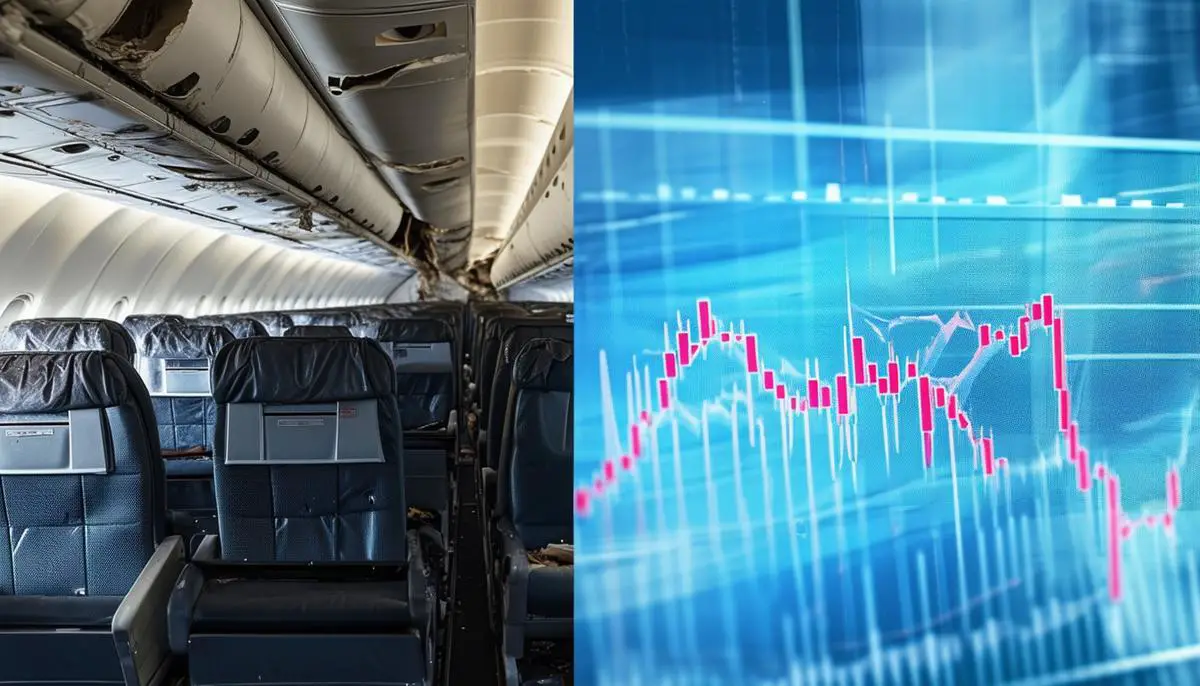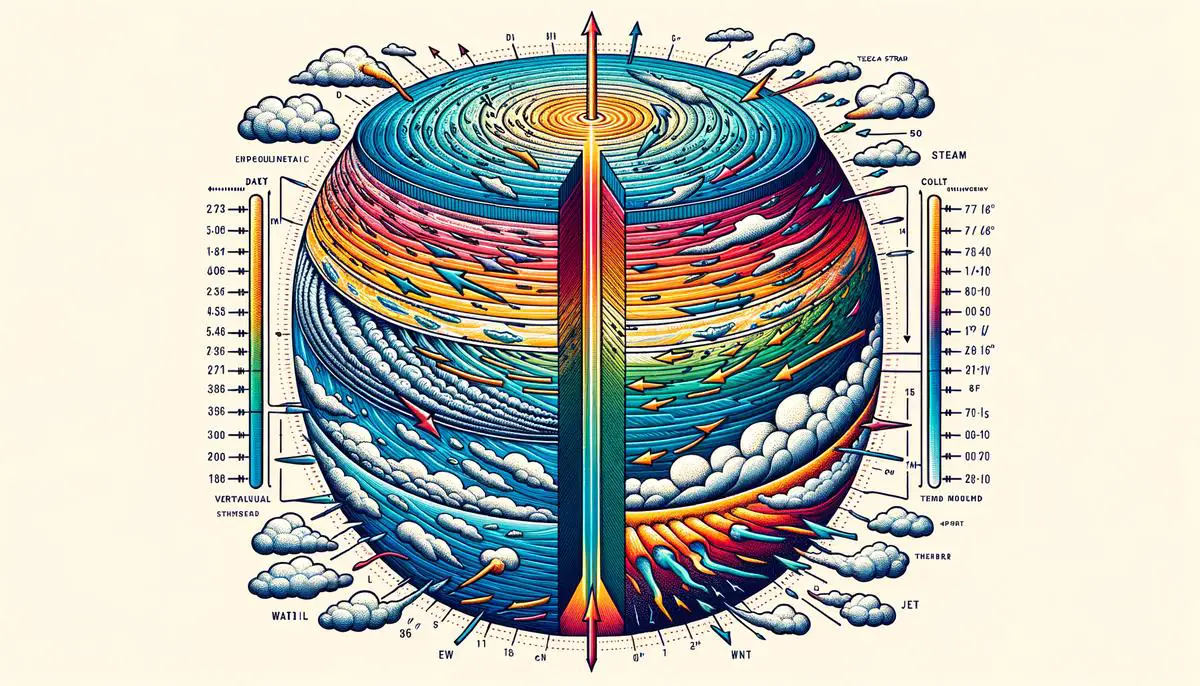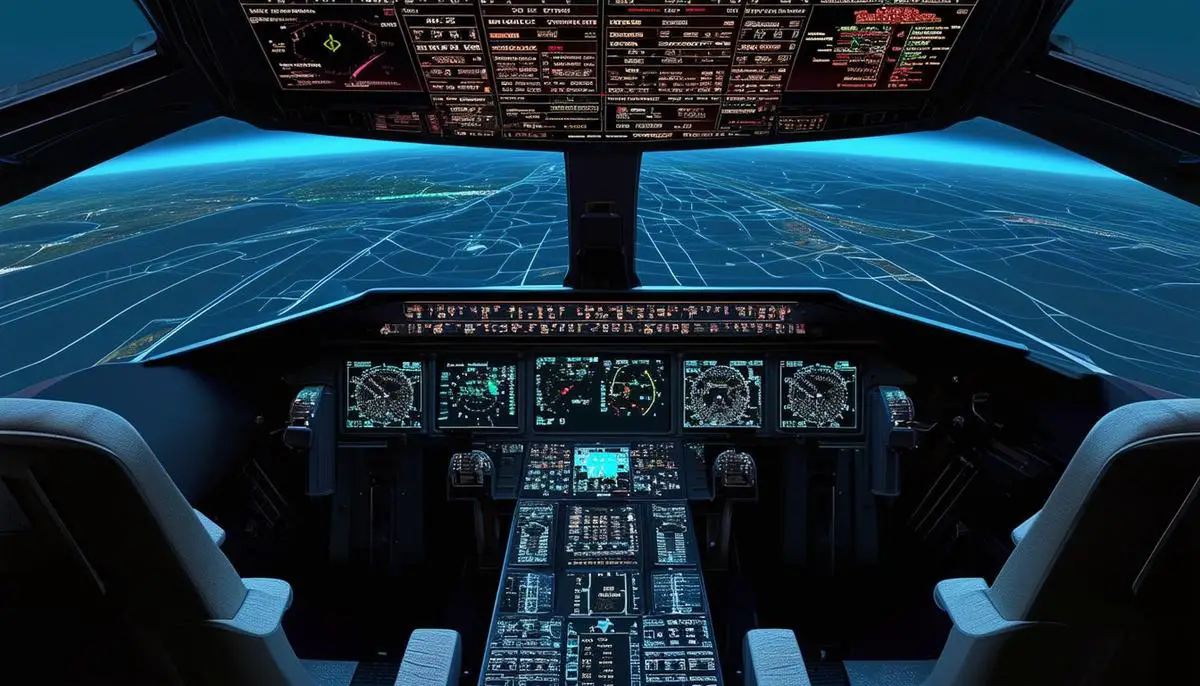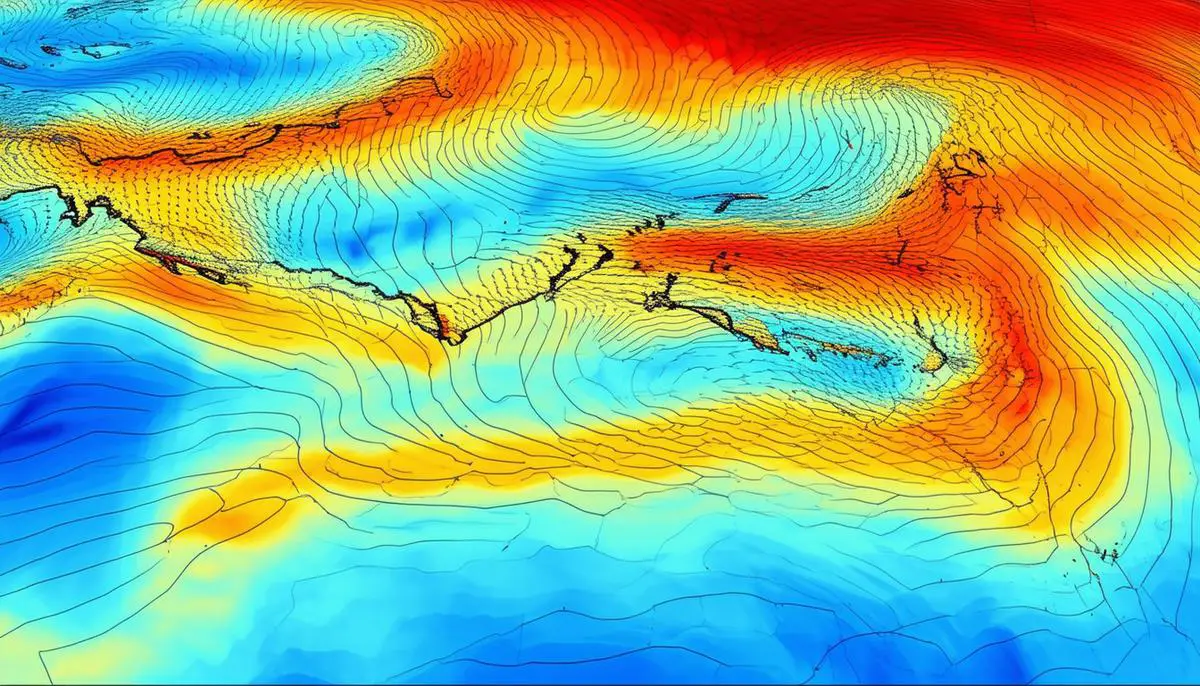Air travel has long been a reliable mode of transportation, but recent climate trends suggest that turbulence is becoming a more significant challenge. This article examines the economic, scientific, and technological aspects of increased turbulence, highlighting its impact on the aviation industry and passenger experience.
Economic Impact of Increased Turbulence
Emerging climate trends suggest an uptick in severe turbulence, posing significant economic challenges for the aviation industry. Increased turbulence could lead to more frequent and costly maintenance checks due to airframe fatigue. In 2003, Eichenbaum estimated that turbulence cost the aviation industry about $200 million annually in the USA1.
Severe turbulence can cause airframe damage, potentially resulting in the need to:
- Replace parts
- Refurbish interiors
- Invest in new aircraft earlier than planned
Passenger and crew safety incidents can lead to expensive medical treatments and potential liability for airlines.
Broader economic impacts affect airlines and passengers alike:
- Unscheduled maintenance causing delayed or canceled flights
- Operational inefficiencies from rerouting planes and changing schedules
- Increased fuel costs due to more frequent rerouting
- Potential slowdown in global trade and tourism
- Higher ticket prices as airlines attempt to recoup costs

Scientific Mechanisms Behind Turbulence
Turbulence results from irregular motion of the air caused by eddies and vertical air currents. Key factors include:
- Vertical wind shear: A major contributor to turbulence, it's the change in wind speed and direction over a short distance. Research shows that with rising temperatures worldwide, the strength of vertical wind shear has increased. A study by S. H. Lee et al. (2019) found a 15% increase in vertical wind shear at 250 hPa over the North Atlantic from 1979 to 20172.
- Thermal stability: Refers to the temperature structure of the atmosphere. Climate change disrupts this balance, creating more frequent interactions between warmer and colder air masses.
- Jet streams: Fast-flowing air currents at high altitudes separating different air masses. Climate change is making these more pronounced and erratic.
Clear-air turbulence (CAT) occurs at high altitudes, usually above 15,000 feet, where there are no visual indicators such as clouds. It is closely tied to vertical wind shear and jet streams, making it particularly challenging to predict.
Convectively induced turbulence (CIT) is driven by convective weather phenomena like thunderstorms. Climate change is making thunderstorms more intense and widespread, particularly in regions that traditionally had fewer severe weather events.
With these factors intensifying due to climate change, the stage is set for more frequent and severe turbulence.

Technological and Predictive Advances
The aviation industry has made significant strides to enhance the prediction and mitigation of turbulence:
- Numerical Weather Prediction (NWP) models: Use mathematical formulations of atmospheric processes to forecast weather conditions, including turbulence.
- Turbulence diagnostics: Algorithms that utilize temperature and wind field data from NWP outputs to pinpoint potential areas of turbulence.
- Light detection and ranging (lidar): Shows promise in detecting clear-air turbulence (CAT) using laser light to detect atmospheric particles and movements.
- Automatic dependent surveillance-broadcast (ADS-B) technology: Allows aircraft to share their position and turbulence encounter data with other nearby planes and ground stations.
Despite these advancements, several limitations persist:
- NWP models struggle with the resolution needed to capture smaller-scale turbulence phenomena.
- Lidar systems need to be miniaturized and made more cost-effective for broader adoption.
Ongoing research and development are essential to improve turbulence prediction and mitigation technologies. Future innovations may involve more sophisticated NWP models with finer resolutions, enhanced multi-diagnostic approaches, and the integration of advanced lidar systems into commercial aviation fleets.

Impact on Flight Safety and Passenger Experience
Turbulence can transform a routine flight into a challenging experience for passengers and crew. Real-world incidents, such as the Singapore Airlines flight over the Indian Ocean that faced severe turbulence, underscore the physical and psychological impacts of these events3.
Injuries sustained during turbulence can range from minor bruises to severe conditions:
- Broken bones
- Head injuries
- In extreme cases, internal bleeding
The psychological toll on passengers and crew can be significant, potentially affecting future travel decisions and causing increased stress for crew members.
"Safety protocols during turbulence are paramount. Flight attendants play a crucial role in guiding passengers through turbulent encounters, offering reassurance, and managing emergency responses."
Implementing and adhering to safety protocols is fundamental:
- The Federal Aviation Administration's regulations stipulate that passengers should keep their seatbelts fastened whenever seated.
- Airlines are increasingly using seatbelt signs strategically to alert passengers of impending rough air.
- Continuous training for flight attendants is essential, including regular drills and updated training programs.
The rising incidence of turbulence due to climate change mandates a renewed focus on passenger and crew safety. Improved communication, advanced predictive technologies, and rigorous adherence to safety protocols are essential in mitigating risks. The aviation industry must continually evolve its strategies to ensure that turbulence remains a manageable aspect of air travel, safeguarding both the physical and psychological well-being of everyone onboard.

Future Projections and Climate Models
Climate models predict a significant increase in turbulence for the aviation sector as global temperatures rise. The RCP8.5 scenario from the CMIP5 project forecasts that by 2050, moderate-to-severe turbulence in key jet stream regions of the Northern Hemisphere could triple. Severe turbulence, causing sudden and violent aircraft drops, is expected to increase even more sharply.
Busier flight corridors, such as those over the North Atlantic and North Pacific, are projected to be most affected. Williams and Joshi's (2013) study, applying 21 turbulence diagnostics to a doubled-CO₂ scenario, found a notable increase in Clear Air Turbulence (CAT) occurrences at cruising altitude.1 Williams (2017) extended this analysis, predicting increases across light, moderate, and severe turbulence categories, with severe turbulence encounters potentially doubling.2
S. H. Lee et al. (2019) observed a 15% increase in vertical wind shear strength over critical regions, supporting the conclusion that warmer temperatures will lead to more turbulent flight conditions.3 The CMIP5 suite shows strengthening and more frequent turbulence in jet stream zones, including areas over:
- North Atlantic
- United States
- Parts of the Southern Hemisphere
Some variations exist among models regarding specific turbulence hotspots. For example, J. H. Lee et al. (2023) identified prominence in the East Asian and East Pacific regions, differing from findings suggesting heightened turbulence over the North Atlantic and USA.4 These discrepancies likely stem from variations in model resolutions and diagnostic indices, highlighting the need for more consistent data resolutions in climate simulations.
Implications for the Aviation Industry
The projected increase in turbulence necessitates effective predictive and operational strategies. Airlines may need to:
- Invest in more durable aircraft technologies
- Integrate advanced turbulence detection systems like lidar
- Develop more precise Numerical Weather Prediction (NWP) models
- Adopt predictive algorithms using real-time data from diverse sources
For passengers, increased turbulence could result in longer flight times due to more frequent detours, potentially higher airfares, and an increased risk of in-flight injuries. Adherence to seatbelt protocols will become even more crucial, emphasizing the importance of effective communication and safety drills.
"The intersection of climate change and aviation technology underscores the need for a multi-faceted approach to address the increasing turbulence problem."
Through advanced modeling, enhanced predictive technologies, and strict safety measures, the aviation industry can adapt to ensure safe, efficient, and resilient air travel amid changing climatic patterns.

As climate models predict more frequent and severe turbulence, the aviation industry must innovate and adapt. By addressing these challenges through advanced technologies and safety measures, we can work towards safer and smoother flights in the future.
![]()
